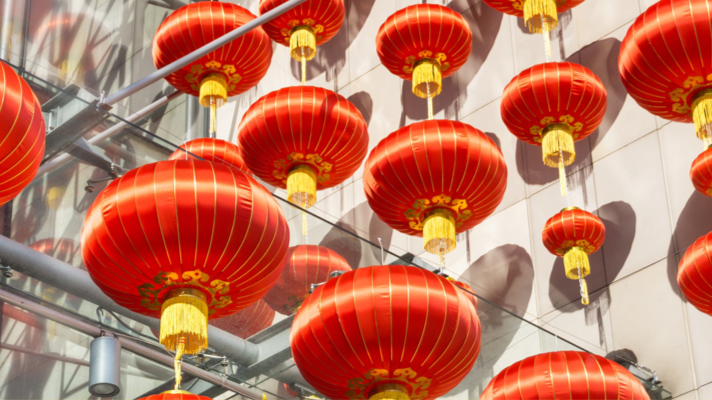The Chinese New Year (CNY) is just around the corner. This week, the world’s biggest migration will take place. Millions will be traveling to come together with family to celebrate the most important holiday of the year.
Roughly two billion people observe the lunar year around the world. 1.4 billion in China. 500 million overseas Chinese. It is a public holiday in some South East Asian countries such as Singapore, Malaysia, Philippines, Indonesia, and Brunei. Korea and Vietnam each have their own version of the Lunar New Year.
Because it follows a lunar calendar, the date changes every year. In 2020, CNY falls on January 25.
This year is also the start of a new zodiac cycle. Each cycle consists of 12 years represented by 12 animals. According to mythology, the Jade Emperor held a competition to decide the zodiac. The Rat won first-place. Note that the Rat does not have the same negative connotations as in other countries. People born in that year are considered resourceful and smart.
Those of you who do business with China will have noticed that celebrations last more than one day. Officially, it is 4 days. But in practice, things are slow for two weeks. New Year’s Eve is the single most important family event. New Year Day (new moon) marks the beginning of the Spring Festival leading up to the Lantern Festival, the first full moon of the year. And all this time, people are feasting, visiting family and friends, showing up with gifts and red envelopes to spread joy and good fortune.
If you have Chinese clients, cultural sensitivity in your communication is essential to increase positive brand awareness and build goodwill. It is good practice to have a Chinese person review it before release. And if you plan to interact with the community beyond marketing communication – for instance, host an event, visit family, honor employees – here are a few pointers to get you started.
Keep in mind that Chinese people are very particular about symbolism. Some consider it superstition. I see it as an exchange of energy. They are very careful with every word they say in order to put forward the most auspicious energy to start the year. No negativity allowed. No unlucky mentions of death, accidents, breakups. Not even jokingly.
Greetings
- Xin nian kaui le = Happy New Year (in Mandarin)
- Gong xi fa cai = Wishing you happiness and prosperity.
Food
Expect nonstop feasting. For days. Dishes may vary slightly from region to region, but the common denominator is copious amounts of everything served. Leftovers are a must. Each dish has a symbolic meaning: health, promotion, wealth, prosperity. All that food represents showers of blessings. Some families, like mine, go vegan the first day. My ancestors believed abstaining from meat is purifying.
- Dumplings = wealth
- Fish = abundance
- Niangao (rice cake) = higher income / position in the new year
- Longevity noodles = long life and health
- Tong yuen (sweet rice balls) = family unity.
Warding off evil spirits / bringing good fortune
- Firecrackers and fireworks
- Lion and dragon dances.
Taboos
- On the first day, do not wash your hair, wash clothes, sweep the floor. That is, don’t throw fortune away.
- Do all the cleaning before the end of year to get rid of old energy and receive the new year with a clean house.
- No crying.
- Don’t borrow money.
- If you are staying at someone’s house, observe these traditions out of respect for your hosts.
Colors
- Red is THE lucky color. That and yellow and gold. If you are designing greeting cards and other communication, these are the colors to use.
- If you would like to add some other colors for branding purposes, or just for fun, it is ok to do so with the exception of white, black and blue. These colors are associated with death. Note that the younger generation is open to fun elements. The older generation is much more traditional.
Clothes
Do:
- New clothes
- Bright happy colors and peaceful pastel colors are all good choices.
Don’t:
- White, black, nor blue
- Torn or patchwork items, even if it’s the latest trend.
Decorations
Do:
- Red lanterns = bright future
- Paper cuttings of peaches = longevity
- Kumquat trees = wealth and good luck
- Images of rats = year of the Rat. (Cute ones please.)
Don’t:
- Knives, scissors, swords = they cut wealth
- White chrysanthemums = funerals.
Red envelopes (hong bao/lei si) = good fortune
They are given by adults to children, employers to employees, seniors to juniors.
Do:
- Crisp new bills
- Give and receive with both hands.
Don’t:
- Odd numbers
- Number 4 = death.
Gifts
Hand out gifts in order of seniority. The most senior first.
Do:
- Red envelopes
- Tea leaves
- Fruits, especially tangerines and oranges = success and luck.
Don’t:
- Pears = leaving/parting
- Clocks = funeral
- Handkerchiefs = goodbye
- Open a gift in front of the person. Thank him, put it aside, and open later.
It may seem like a lot to digest, but it is actually quite simple. It’s all about being with your loved ones, sharing abundance and paving the way for a successful new year.
Xin nian kuai le! Gong xi fa cai!
